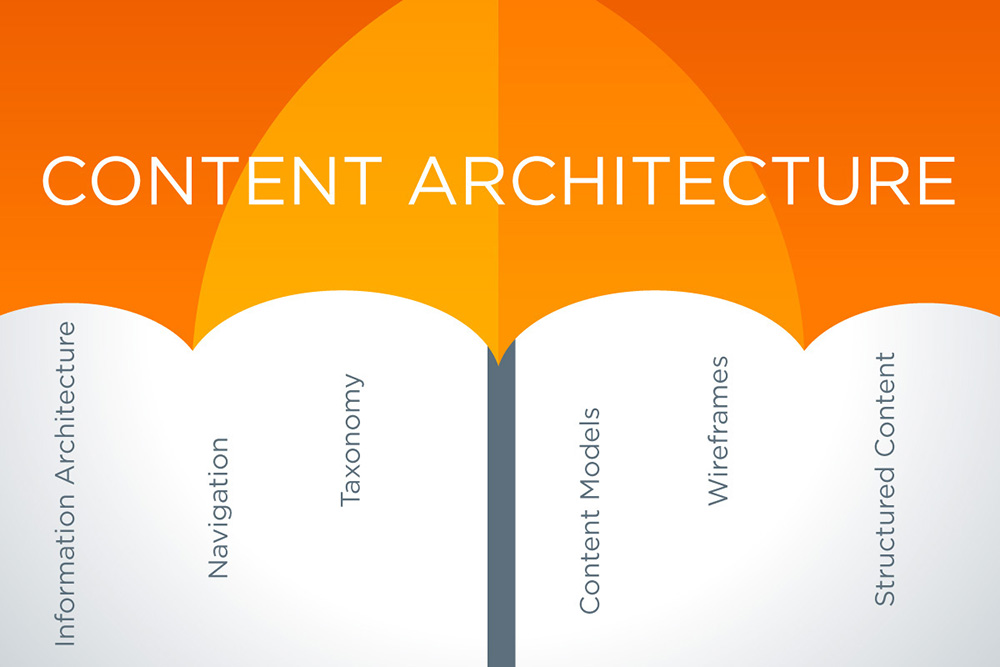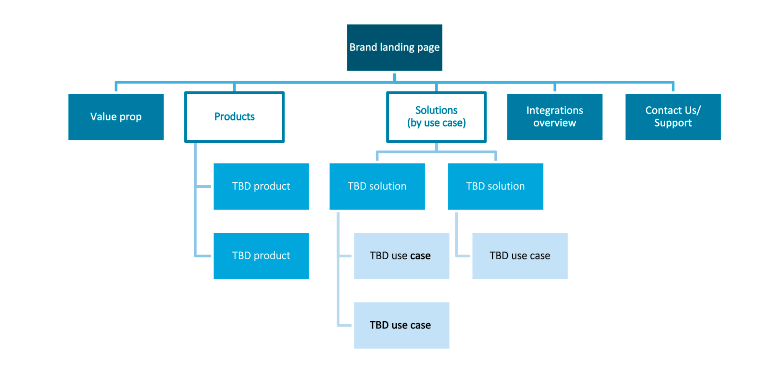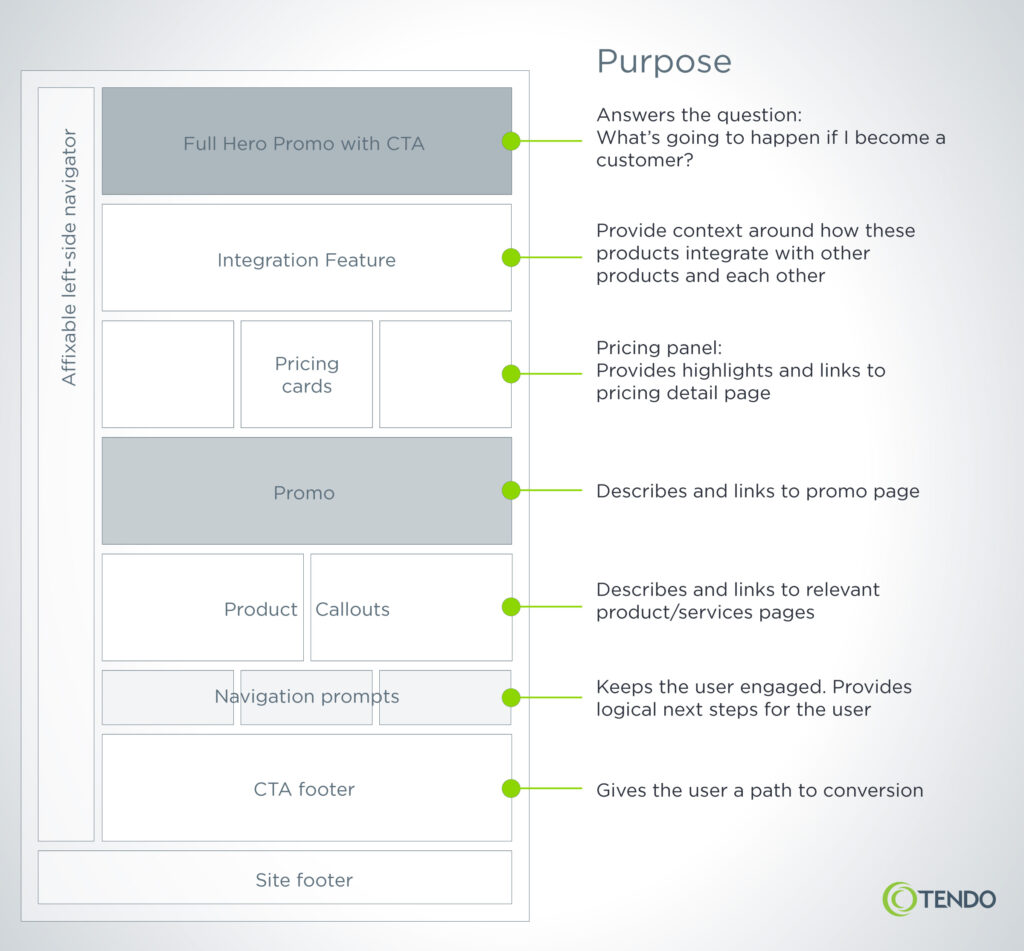Have you ever rearranged the elements on a webpage for emphasis, designed a navigation menu, or separated content into fields within your content management system (CMS)? Then you’ve contributed to content architecture. And by doing so, you’ve likely improved the content experience for your customers. Keep reading to learn why content architecture matters.
What Is Content Architecture?
Content architecture is an umbrella term that describes various methods of organizing content logically to support the user experience and manage content in a scalable manner. It’s often invisible in the end product, but it makes content management easier and provides the scaffolding that brings the content experience to life.

Here are four things to know about content architecture.
1. It Provides Structure for the Content Experience
Few people have “content architect” as their job title, and in most cases, you won’t hear anyone talking about “doing content architecture.” It is just the umbrella term for all the different methods of structuring the content experience. Some of these components include:
- Information architecture, the overall organization of a site or repository of content, which can be further divided into navigation, labeling, and taxonomy
- Content models and wireframes, which comprise the on-page content architecture
- Structured or modular content, or content that is separated into its component parts so that they can be surfaced in the appropriate place and repurposed across content types
Let’s dig into these various components.
Information architecture involves organizing content so that it’s easy to understand and navigate. And it can cover app or website information architecture. A taxonomy supports your information architecture with a hierarchy of clear, logical categories and associated tags, and thoughtful navigation directs users to the content they need.
Here’s an example information architecture showing how content is organized on a B2B website:

Content models are visual representations of the way content will be structured on a webpage, whereas wireframes are more detailed outlines that define the entire framework of elements on a page, including their exact size, functionality, and placement. Both content models and wireframes are content architecture taken at the page level.

Structured content (sometimes called modular content) is content that is broken down into its component elements—for example, the headline, byline, snippet, and body of a blog post—in order to easily surface and repurpose them across different platforms.
2. It Supports the User Experience
The content experience is not just about the content itself—it’s all about how people interact with it. Similarly, content architecture isn’t just about structure or technical details. It’s about what the user is trying to do or what story you want to tell, and what architecture would best support that goal.
For example, take a product page that prominently features an overview video at the top of the page, followed by key benefits, which are further emphasized with a larger font and spot illustrations. Detailed product specifications are located farther down on the page.
This hierarchy of content was most likely defined by a content strategist in a content model, then refined by a UX designer in a wireframe. But these tools and methods aren’t what matters to the user. Rather, users care that the information they need is front and center, and that the flow of content elements on the page guides them through the story to be told. Content architecture makes this possible.
Here’s another example: A personalized landing page displays content cards for different products depending on the user’s interests. These content cards consist of pieces of content—such as the product image, name, and description—that are also used on the product page when the user clicks through. This consistency and personalization wouldn’t be possible without well-structured content on the backend, but the user only cares that you’ve served up content targeted to their interests as part of a consistent, connected content experience.
3. Everybody Is Responsible for Content Architecture
By now you’ve probably realized that architecture isn’t solely the domain of content strategists. True, they know the territory—but they need the support of UX designers, content creators, and even developers to make sure all parts of the architecture work together smoothly.
For example, a content strategist might be in charge of defining the overall content hierarchy, but the UX designer is the one who refines and reinforces it in the wireframe. Graphic designers have a role to play here, too, since visual features like font size, spacing, and color can emphasize and draw attention to content elements. And when it comes to structured content, it takes the technical know-how of developers and data analysts—as well as the support and buy-in of content creators—to get everything working smoothly.
The takeaway: Content architecture is a large, multifaceted operation that touches many parts of the user journey, and it needs support from the design, UX, content, and engineering teams to be successful.
4. Content Architecture Matters to Overall Content Strategy
A strong architecture opens up a whole new world of possibilities for your content. In particular, structured content is a powerful engine that enables personalization, supports omnichannel content, allows repurposing of content, and helps scale content creation. Website IA supports content discovery, while content models and wireframes support storytelling and build a coherent user journey. All of these elements are crucial to your organization’s content strategy.
Content architecture may not be the most visible part of your content strategy, but it unlocks ways of repurposing your content and enhancing the content experience that will wow your customers while saving you time and money.
Need Help Architecting Your Content?
Tendo’s seasoned content strategists can help you build content models, taxonomies, personalization frameworks, and more. Learn more about our user experience services, or get in touch today.
First published June 2, 2021










